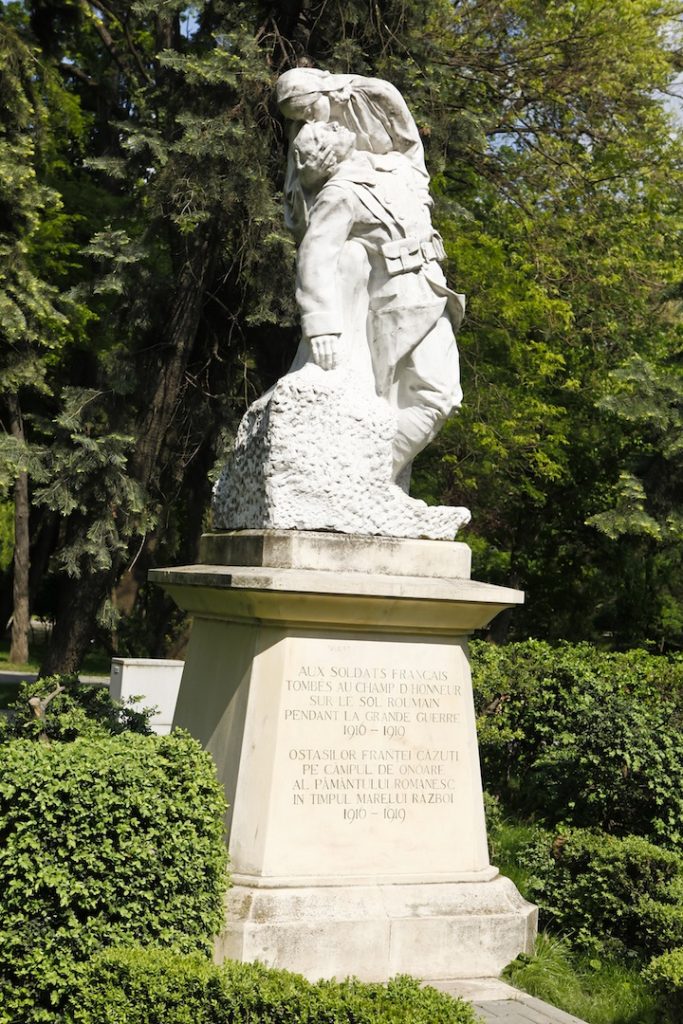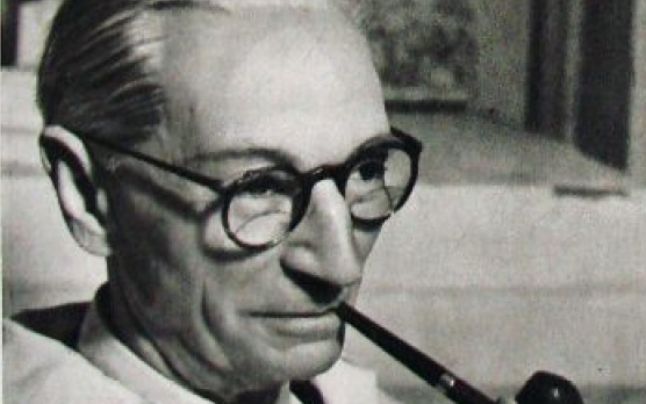
The French Heroes Monument is a Carrara marble statuary group, the work of the sculptor Ion Jalea, dedicated to the memory of “French soldiers who fell on the field of honor of the Romanian land during the Great War 1916-1918”.
The statue dedicated to French soldiers depicts a nurse tending to a wounded soldier.
The monument was inaugurated on October 25, 1922.
Other works by Ion Jalea in Bucharest: The Ceferist Heroes Monument, near the North Railway Station, the “Hercules Fight with the Centaur” Statue, located in Herăstrău Park, the Spiru Haret Statue, the Mihai Eminescu Bust from the Writers’ Rotunda, the George Enescu Statue in front of the National Opera, the Bust of Miguel de Cervantes located in the Spanish Square.
What is the significance of the monument?
433 French soldiers who died during the First World War are buried in cemeteries in Bucharest, Alexandria, Constanța, Galați, Iasi, Slobozia and Timişoara. Some of them were part of the unit that accompanied General Berthelot in his mission to assist the Romanian army, between 1916 and 1917. Many of the doctors and nurses of the Mission died in the fight to limit the ravages caused by typhus among the military, as well as among the civilian population.
This monument is proof of gratitude for a country with which Romania has had a special relationship over time, France.
Who was Ion Jalea?

Ion Jalea participated in the War of National Reunification (1916-1918), on the Moldovan front, where, following a wound, he lost his left arm.
His passion for sculpture and his talent led him to overcome the limitations imposed by his disability, continuing to “model” his works with one hand.
In a collective exhibition, organized in Iasi by the mobilized artists, the sketches of the front were exhibited, in which the artist evoked the memory of the war, but also the horrors of the tragedies it caused and the feeling of gratitude for the heroes who fell in the line of duty, all these feelings being transposed in the “Monument of French soldiers fallen on the territory of Romania” (Bucharest, 1922), “Monument of Ceferist heroes” (Bucharest, 1923), “Monument dedicated to Romanian soldiers, former prisoners in Germany” (erected at Dieuse, France), as well as in the basorelief of the “Mausoleum of Mărăşeşti”, made together with Cornel Medrea.
For more information, click here.